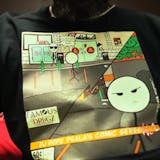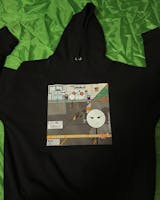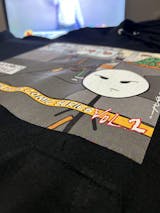With DTF printing, various designs are obtained with the prints transferred to the fabric surface in the textile industry. Interactive clothing creation refers to clothing created with digital technology. Creating interactive garments digitally is the advancing technology dimension of DTF printing. Nowadays, we try various ways to keep up with the digitalizing world.
Being open to innovations in design printing on digital platforms, the interactive clothing creation experience emerges with its high-level performance. Interactive clothing creation is digitally designed clothing that interacts with the user. These clothes may have digital features. The place of DTF printing in interactive clothing is generally to ensure that the printing process is transferred digitally and in the most realistic way.
Interactive clothing creation using the DTF printing method is known as the printing applied to the clothing and printing artistic design and technological symbols directly onto the textile. This method proceeds step by step and the garment is prepared digitally. First of all, the printing process is designed in a digital environment that includes visual elements. Technological icons are planned and placed. When printing on film, the graphics to be transferred to the garment are determined digitally and the design is permanently transferred to the garment.
Digital elements that make the print interactive are transferred to the garment. This makes the garment interactive. Interaction means equipping the product with digital elements and achieving a realistic result. In this regard, it is important to include digital elements when creating interactive clothing with dtf printing. By adding difference to the garment, designing interactive clothing to convey reality and give a feeling of confidence with unique prints provides an increase in customers.
Advantages of Interactive Clothing Creation
The benefits of creating interactive garments with DTF printing include high resolution, vibrant colors, and digital reality elements. Among these advantages, detailed and eye-catching visuals in interactive clothing are attractive to customers. The unique realism design is accurately integrated into the garment as a result of different features and dimensions. While the prints of interactive clothes are transferred using the dtf printing method, it is necessary to leave no room for error in order to be perfect. In addition to making digital trial prints by trial and error method, the control phase of the prints is also a feature of creating an accurate interactive garment.
Interactive garment creation in DTF printing involves the process of printing on clothing by transferring the print directly to the film layer as a result of the preparation of digitally prepared graphics. There are elements that need to be taken into consideration in these important transactions. Digitally prepared prints must be made without any defects when creating interactive clothing. Afterwards, the quality and resolution of the prints are designed by minimizing the margin of error. Processes are carried out by taking into account the factors required to ensure high resolution of the print. Interactive garments are prepared accurately for customers' demands using the DTF printing method, preserving color vibrancy and accurate transfer of bright colors.
Digital Elements
There should be no defects in the digital elements to be used when performing the print design process with high quality accurate graphics. The print transfer is transferred onto digitally interactive clothes without any disruption. In this way, the print transfer is easily transferred to the garment in creating interactive clothing with the dtf printing method. Providing the right service for customer satisfaction and working in printing without ignoring quality standards is appropriate for the entire process. With the interactive clothing obtained as a result of high performance, the products are made ready to be delivered to customers.








